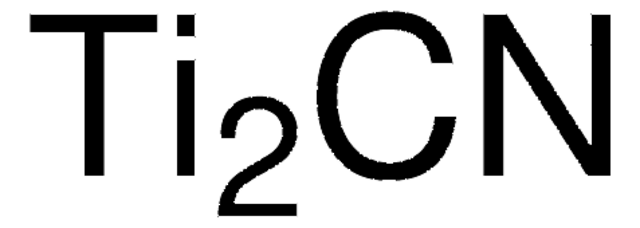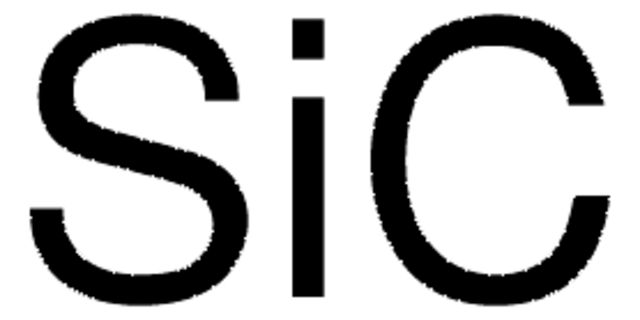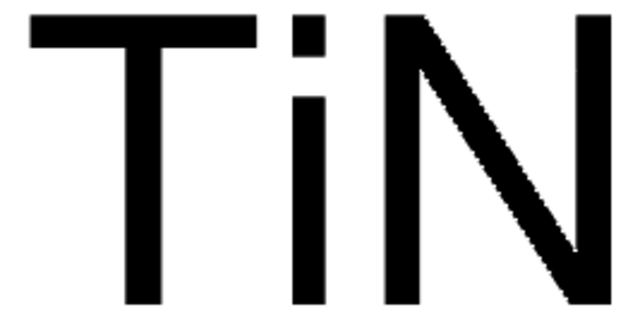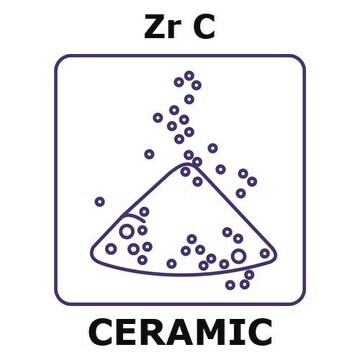336289
Titanium boride
powder, <10 μm
Iniciar sesiónpara Ver la Fijación de precios por contrato y de la organización
About This Item
Fórmula lineal:
TiB2
Número de CAS:
Peso molecular:
69.49
EC Number:
MDL number:
UNSPSC Code:
12352300
PubChem Substance ID:
NACRES:
NA.23
Productos recomendados
form
powder
Quality Level
particle size
<10 μm
density
4.52 g/mL at 25 °C (lit.)
SMILES string
B#[Ti]#B
InChI
1S/2B.Ti
InChI key
QYEXBYZXHDUPRC-UHFFFAOYSA-N
Categorías relacionadas
Application
- Surface Modifications to Reduce Wear in Hot Extrusion of Copper: Discusses the use of titanium boride in surface treatments to enhance the wear resistance of tools used in the hot extrusion of copper (Thewes et al., 2024).
- Stable DC Vacuum Arc Plasma Generation from a 100 mm TiB2 Cathode: Explores the use of titanium boride in generating stable plasma for coatings, emphasizing its efficiency and stability in industrial applications (Zhirkov et al., 2024).
- Structure Searches and Superconductor Discovery in XB2: Investigates various titanium boride compounds in the context of their structural properties and potential superconductivity applications (Meng et al., 2024).
signalword
Warning
hcodes
Hazard Classifications
Acute Tox. 4 Oral
Storage Class
11 - Combustible Solids
wgk_germany
WGK 3
flash_point_f
Not applicable
flash_point_c
Not applicable
ppe
dust mask type N95 (US), Eyeshields, Gloves
Elija entre una de las versiones más recientes:
¿Ya tiene este producto?
Encuentre la documentación para los productos que ha comprado recientemente en la Biblioteca de documentos.
Los clientes también vieron
Changchun Cao et al.
Huan jing ke xue= Huanjing kexue, 23(6), 108-110 (2003-03-07)
Using 365 nm and 254 nm UV lamp as light source, the degradation of dye X-3B in photolysis, photocatalysis and electrical enhanced photocatalysis was studied in this research. The result shows that the degradation rate of photocatalysis of X-3B was
Yarui An et al.
Chemistry (Weinheim an der Bergstrasse, Germany), 16(48), 14439-14446 (2010-11-03)
α-Synuclein (α-SYN) is a very important neuronal protein that is associated with Parkinson's disease. In this paper, we utilized Au-doped TiO(2) nanotube arrays to design a photoelectrochemical immunosensor for the detection of α-SYN. The highly ordered TiO(2) nanotubes were fabricated
I Dion et al.
Biomaterials, 14(2), 107-110 (1993-01-01)
Ceramics are more and more frequently under consideration for construction of blood-contacting devices, i.e. cardiac valves or cardiac assist devices. This study evaluated the haemolysis eventually initiated in vitro by ceramic powders (Al2O3, ZrO2/Y2O3, AlN, B4C, BN, SiC, Si3 N4
Marta Pegueroles et al.
Biointerphases, 7(1-4), 48-48 (2012-08-10)
An understanding of protein adsorption process is crucial for designing biomaterial surfaces. In this work, with the use of a quartz-crystal microbalance with dissipation monitoring, we researched the following: (a) the kinetics of adsorption on TiO(2) surfaces of three extensively
Pengyu Dong et al.
Nanoscale, 4(15), 4641-4649 (2012-06-22)
Graphene sheets were obtained through solvothermal reduction of colloidal dispersion of graphene oxide in benzyl alcohol. The graphene/rod-shaped TiO(2) nanocomposite was synthesized by this novel and facile solvothermal method. During the solvothermal reaction, both the reduction of graphene oxide and
Nuestro equipo de científicos tiene experiencia en todas las áreas de investigación: Ciencias de la vida, Ciencia de los materiales, Síntesis química, Cromatografía, Analítica y muchas otras.
Póngase en contacto con el Servicio técnico











